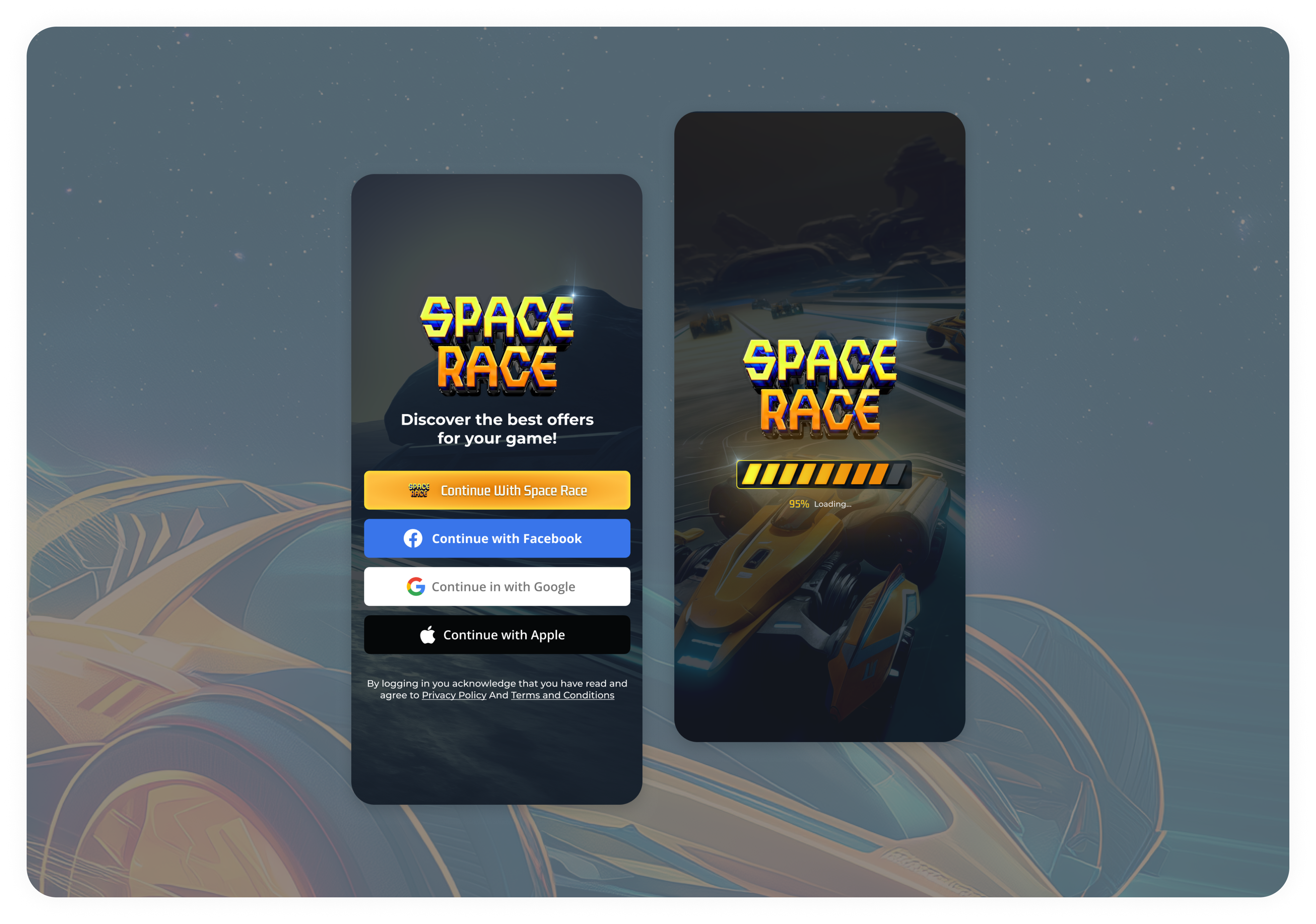About Player Authentication
Appcharge offers a comprehensive Player Authentication system that integrates seamlessly with the existing login methods in your game, as well as an OTP (One-Time Password) option. This unified approach allows players to authenticate securely and conveniently, enhancing their overall experience in the webstore.
Note: Configure Player Authentication via the Player Authentication Webhook in the API reference page.

High-Level Configuration Flow
- Decide on Authentication Methods
Start by identifying which authentication methods you want to offer from the following:
- Apple
- Username and Password
- Player ID
- OTP (One-Time Password)
- Review Documentation for Each Method
Refer to the specific documentation for each chosen method to get step-by-step instructions on configuration. You will need to save certain information required for setup in the Appcharge dashboard.
SSO Methods
Single Sign-On (SSO) enables players to log in using a single set of credentials (e.g., Google, Apple, Facebook) across multiple platforms. This approach uses a token that does not contain any personal data on the player—it acts as a disposable unique identifier. This way Appcharge cannot store or possess any personal information about the player.
For SSO setup instructions, see:
Other Methods:
For non-SSO authentication methods, refer to the following:
- Configure in the Dashboard
Navigate to the Authentication Page in the Publisher Admin Dashboard to start configuring the Player Authentication settings. There, you'll be able to select and enable the authentication methods you wish to support and add the relevant information you saved as instructed in the relevant methods configuration documentation.
- Access the Authentication Page documentation for the Publisher Admin Dashboard
- Validate with Player Authentication Webhook
After setting up the authentication methods, link the entire process to the Player Authentication Webhook to enable secure handling of authentication data.
Authentication Flow:
- Player Chooses an Authentication Method
The player selects their preferred authentication method (e.g., Facebook, Apple, Google, Username/Password, OTP). Appcharge utilizes the corresponding App ID (for Facebook), client ID (for Apple), or client_id (for Google) on the frontend to obtain the client token. - Token Handling
Appcharge supports both response type codes and id_token functionalities for Facebook, Google, and Apple logins.
Note: The default configuration for Apple login uses the response type code. If you prefer to utilize the id_token functionality, please contact our support team for assistance. - Webhook URL Configuration
Ensure that the webhook URL is correctly set up in the Appcharge management dashboard. This is critical for receiving authentication notifications. - Dashboard Configuration for App IDs
Input the relevant App IDs for each authentication method in the dashboard settings. This allows Appcharge to validate and handle authentication requests appropriately. - Server Communication
After successful authentication, the player's login details (including tokens) are sent to the game server for validation and processing. - Response and Player Data Retrieval
Once the server processes the authentication, it returns a detailed response containing:- Whether the player is valid (authenticated).
- Publisher Player ID: A unique identifier assigned to the player by the publisher.
- Player Name: The name associated with the player's account.
- External Profile Picture: A link to the player’s profile image.
- List of currencies and their balances: Relevant financial data for in-game transactions.
Supported Authentication Methods:
- Facebook App
- Google App
- Apple App
- Username and Password
- One-Time Password (OTP)
Reference to FB, Apple, and Google Auth Documentation:
- Facebook: Frontend guide | Backend Guide.
- Apple: Guide for Token Generation and Validation.
- Google: Guide to Verifying Google ID Tokens.
For Password-less (OTP) player authentication method please visit: OTP Authentication
Updated 5 months ago
